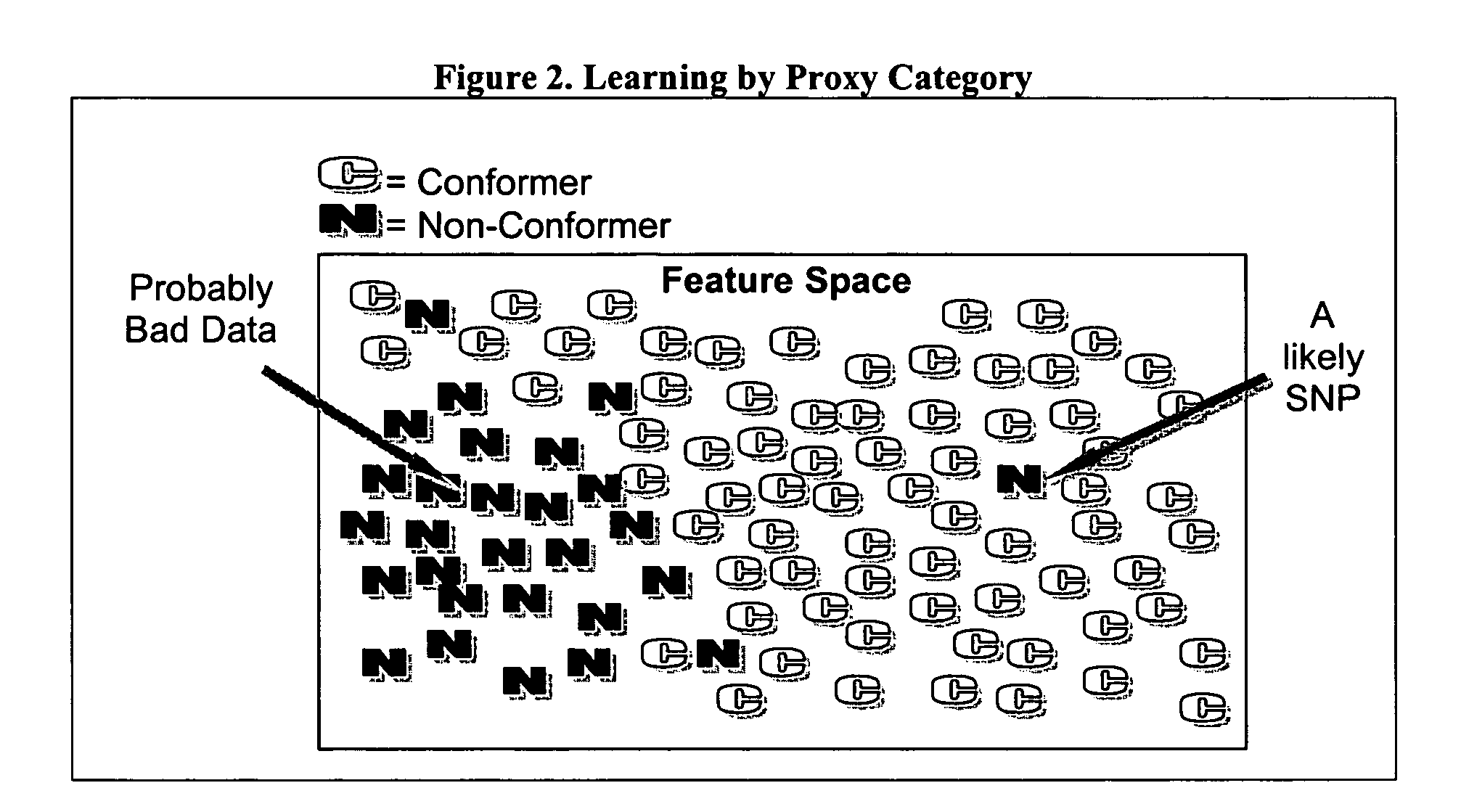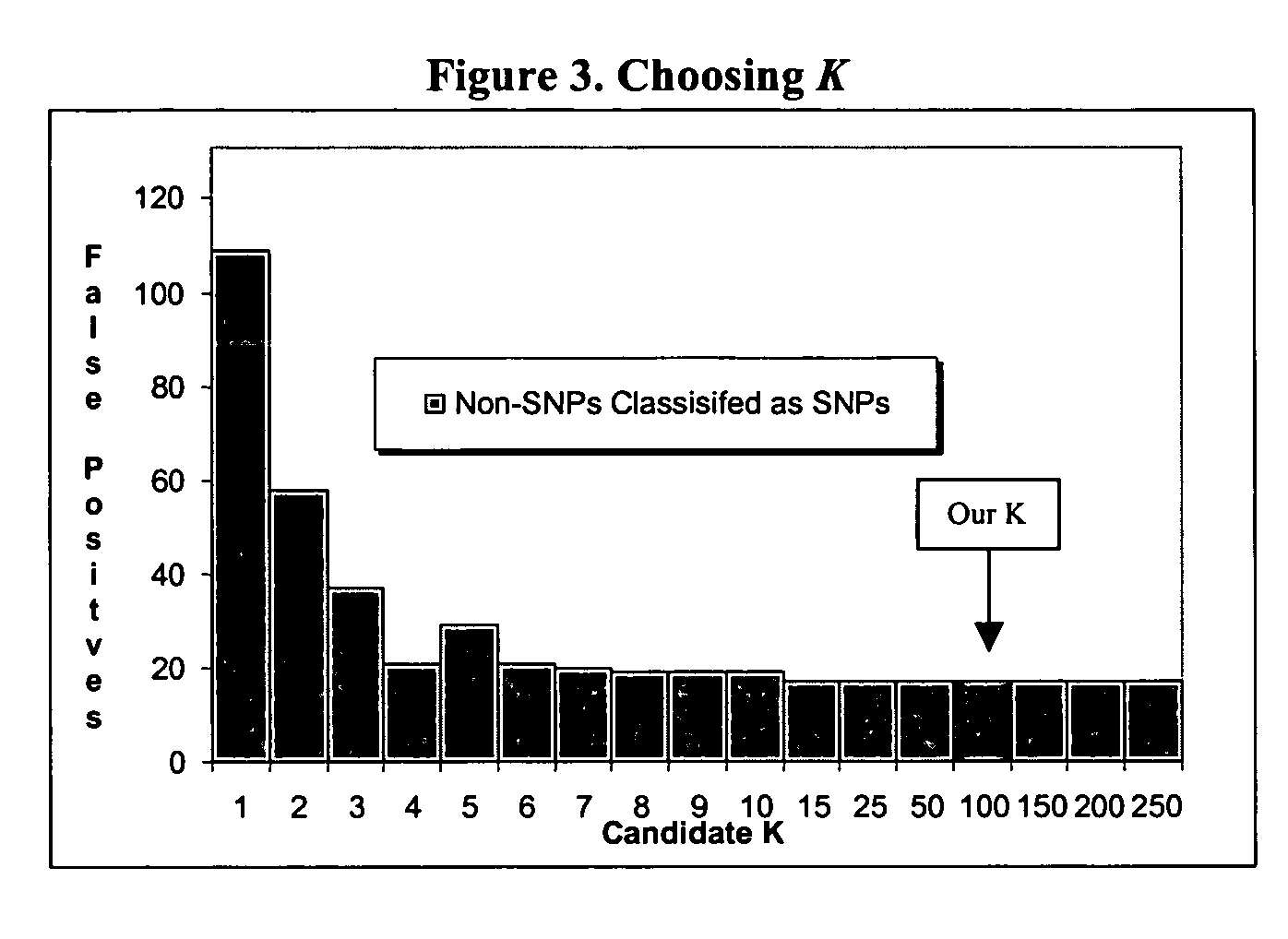Computer software to assist in identifying SNPS with microarrays
a microarray and computer software technology, applied in the field of dna microarray technology, can solve the problem that the process is too laborious to be practical for snp detection on a large scale, and achieve the effect of improving the predictability of the process over tim
- Summary
- Abstract
- Description
- Claims
- Application Information
AI Technical Summary
Benefits of technology
Problems solved by technology
Method used
Image
Examples
example
[0029] In order to evaluate the algorithm, we chose a useful realistic task. One strain of the SARS virus has been completely sequenced via standard capillary sequencing. We were supplied with a different sample strain. This sample differed in genetic sequence from the reference to an unknown degree. Our task was to identify candidate SNPs from among these variations. Our predictions would subsequently be evaluated using further capillary sequencing and various other laboratory methods.
[0030] Using the reference sequence, we designed a resequencing chip including both the forward and reverse strands of this virus. We then exposed this chip to nucleic acids from the sample of the new virus. Then we used our algorithm to predict the SNPs on this chip. Once these results were obtained, we combined the forward and reverse predictions for each possible SNP position by averaging the two predictions.
[0031] Our algorithm performed very well on this task. Out of the 24,900 sequence positio...
PUM
 Login to View More
Login to View More Abstract
Description
Claims
Application Information
 Login to View More
Login to View More - R&D
- Intellectual Property
- Life Sciences
- Materials
- Tech Scout
- Unparalleled Data Quality
- Higher Quality Content
- 60% Fewer Hallucinations
Browse by: Latest US Patents, China's latest patents, Technical Efficacy Thesaurus, Application Domain, Technology Topic, Popular Technical Reports.
© 2025 PatSnap. All rights reserved.Legal|Privacy policy|Modern Slavery Act Transparency Statement|Sitemap|About US| Contact US: help@patsnap.com



